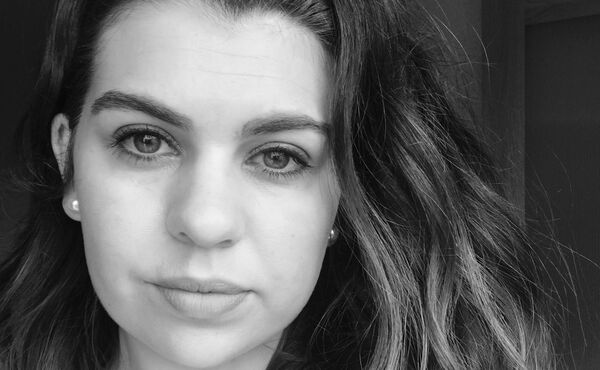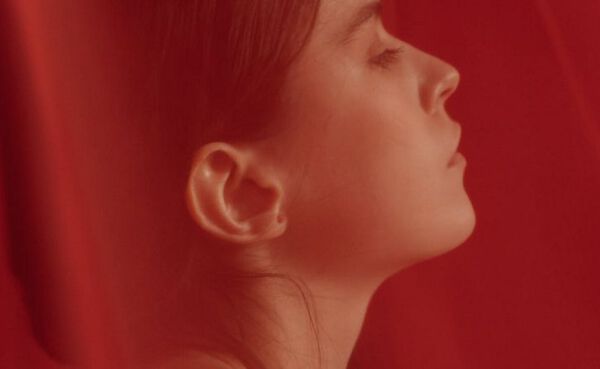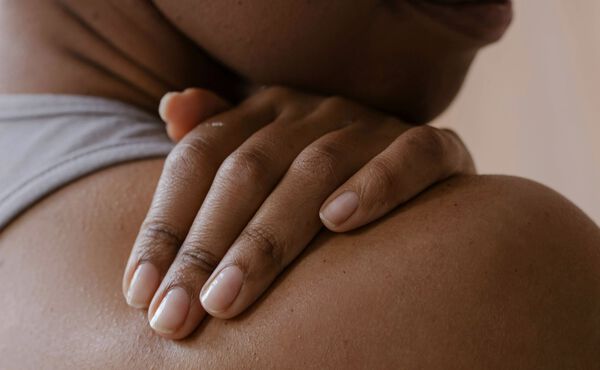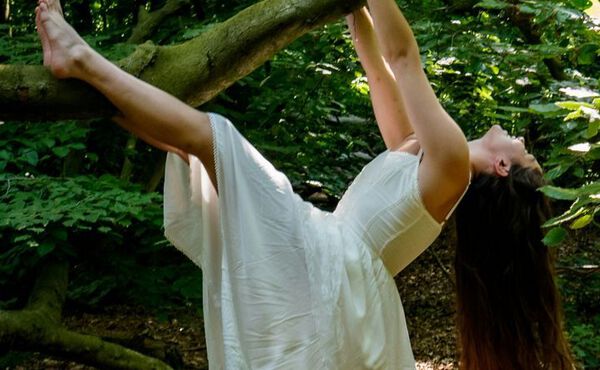Descubre cómo usar una piedra gua sha en el rostro y el cuerpo, con consejos expertos para elevar, suavizar y relajar.
Las piedras gua sha son mucho más que una moda. Se trata de una tradición centenaria procedente de la medicina china que se usa para mejorar la circulación, aliviar la tensión y recuperar el equilibrio.
La técnica consiste en pasarse una herramienta de bordes suaves por la piel, para eliminar la tensión, mejorar la circulación y recuperar el brillo natural. Con la nueva piedra gua sha corporal The Ritual of Jing, ahora puedes incorporar esta práctica relajante a tu rutina cotidiana.
¿Comenzamos? Tanto si es la primera vez que oyes hablar de las piedras gua sha como si quieres ir un paso más allá en su uso, esta guía te cuenta todo lo que necesitas saber, con consejos expertos sobre cuándo y cómo usarlas.

¿Qué son las piedras gua sha y cuáles son sus beneficios?
“Gua sha” significa “raspar” en chino, pero no te dejes engañar por su nombre. Los actuales masajes con piedras gua sha son suaves, relajantes e increíblemente eficientes. Cuando se realizan con la presión y el aceite adecuados, pueden ayudar a:
- Reducir la hinchazón y la retención de líquidos
- Iluminar y reafirmar la piel
- Mejorar el drenaje linfático y la circulación
- Aliviar la tensión muscular
- Fomentar la producción de colágeno a largo plazo
“Como doctora de estética, suelo recomendar las piedras gua sha como una rutina relajante y no invasiva que resulta beneficiosa para la piel y para la fascia de debajo” afirma la doctora Barbara Kubicka, dermatóloga y directora de Clinicbe en Londres. “La gente suele notar de inmediato una reducción de la hinchazón, un tono más radiante de la piel y una apariencia más esculpida, especialmente alrededor de los pómulos y la mandíbula”.
Pero son los beneficios a largo plazo que describe la doctora Kubicka los que más nos atraen: “Con un uso constante a lo largo del tiempo, las piedras gua sha pueden ayudar a mejorar el drenaje linfático, suavizar las líneas de expresión, fomentar la producción de colágeno y liberar la tensión muscular que puede contribuir a una piel flácida y apagada” explica.
Cómo usar una piedra gua sha en el rostro
Usar una piedra gua sha en el rostro es una de las maneras más sencillas de subir de nivel tu rutina de autocuidado. Además, empezar es muy sencillo: limpia y prepara la piel con un aceite facial, aplica una ligera presión y disfruta de un rostro mucho menos tenso.
“Siempre recomiendo a mis clientes usar la piedra gua sha sobre la piel preparada”, señala la doctora Kubicka. “Un aceite ligero y natural como el de jinjolero o rosa mosqueta funciona genial en el rostro y resulta relajante y nutritivo. Puedes aplicarlo sobre la piel limpia y seca después de usar un sérum o bruma hidratante, pero asegúrate de que la superficie esté suave y bien lubricada”.
¿Comenzamos? Sigue esta guía paso a paso para crear tu rutina facial gua sha en casa.
Rutina facial gua sha paso a paso:
- Empieza por el cuello. Desliza la piedra gua sha hacia arriba desde la clavícula hasta la mandíbula con el borde plano para fomentar el flujo linfático.
- Define la mandíbula. Coloca el borde curvo en el mentón y deslízalo hacia la oreja.
- Eleva las mejillas. Usa movimientos largos desde la nariz a la sien, pasando por debajo del pómulo.
- Ojos menos hinchados. Pasa la piedra suavemente debajo de los ojos y por el arco de las cejas.
- Alisa la frente. Deslízala entre las cejas y hasta el nacimiento del cabello.
“Aplica siempre primero un aceite facial”, recomienda la doctora Kubicka. “Así, la piedra gua sha puede deslizarse cómodamente por la piel, reduciendo la fricción y la irritación”.
¿Notas la piel especialmente hinchada? Guarda la piedra gua sha en el frigorífico para lograr un efecto frío y descongestionante, perfecto para tratar los ojos cansados por la mañana.
Más allá del rostro: prueba la piedra gua sha en el cuero cabelludo
Una de las zonas por las que solemos olvidarnos de pasar la piedra gua sha es el cuero cabelludo. Los masajes frecuentes en esa zona ayudan a liberar la tensión, estimular la circulación y pueden incluso fomentar un crecimiento más sano del cabello con el paso del tiempo.
“Mucha gente no se da cuenta de que también puedes usar la piedra gua sha en el cuero cabelludo” afirma Donna Bartoli, terapeuta de la piel y experta en salud holística. “Es maravilloso para eliminar tensión, estimular el crecimiento del cabello y mejorar el flujo sanguíneo a los folículos”.
¿Cómo se usa la piedra gua sha en el cuero cabelludo? “Usa el lado dentado (si, como la nuestra, lo tiene) o el lado plano de la piedra gua sha y pásalo por el cuero cabelludo, especialmente en la línea de nacimiento y la corona”, explica Bartoli. “Es una sensación maravillosa y ayuda a liberar tensión”.
Cómo usar la piedra gua sha en el cuerpo
Aunque de lo que más se habla es de los masajes faciales con la piedra gua sha, también la puedes usar en el cuerpo con resultados igual de maravillosos. Con un poco más de presión y el aceite corporal adecuado, la piedra gua sha para el cuerpo puede ayudar a mejorar la circulación, reducir la tensión y promover el flujo linfático, por lo que es especialmente adecuada cuando tienes sensación de pesadez o hinchazón. Además, es una ocasión perfecta para dedicarte un rato solo a ti.
“En el cuerpo puedes usar mayor presión (siempre acompañado de aceite corporal) para fomentar el drenaje linfático, reducir la tensión y mejorar la circulación”, señala Bartoli. “Céntrate en zonas como los muslos, los brazos y el estómago, con movimientos amplios hacia el corazón. Me encanta usarla en momentos puntuales de mi ciclo, cuando retengo mucha agua, o después de viajar”.
Para obtener los mejores resultados, tanto Bartoli como la doctora Kubicka recomiendan incorporar un masaje con piedra gua sha para el cuerpo en la rutina de autocuidado que ya tengas.
“Trabaja siempre en la dirección del flujo linfático y termina con unas respiraciones profundas o un ligero masaje para potenciar los resultados”, recomienda la doctora Kubicka. “Si se practica de manera frecuente, la piedra gua sha puede ser mucho más que una herramienta de cuidado de la piel y transformarse en toda una ceremonia de autocuidado”.
Rutina corporal gua sha paso a paso:
- Mejora la circulación en las piernas. Realiza movimientos ascendentes desde los tobillos hasta los muslos para favorecer el flujo linfático y sentir las piernas menos pesadas.
- Reduce la tensión en la cadera y los muslos. Usa movimientos largos y firmes desde los muslos hasta la entrepierna para eliminar la hinchazón y la tirantez.
- Estimula los brazos. Pasa la piedra desde las muñecas a los hombros, terminando cada pasada en las axilas para favorecer el drenaje.
- Mejora la digestión. Realiza suaves círculos alrededor del ombligo y luego movimientos ascendentes hacia las costillas para reducir la hinchazón.
- Elimina la tensión en los hombros. Pasa la piedra por la parte inferior de la espalda y desde los hombros para relajar los músculos agarrotados.
- Termina con un toque de relax. Para terminar, respira hondo, date un ligero masaje o tómate una bebida buena para el sistema linfático, como agua templada con limón.
¿Te animas a probar las piedras gua sha? Empieza con el kit de masaje gua sha completo que aparece a continuación.
-
Ver los detalles14,90€
-
Ver los detalles9,90€










